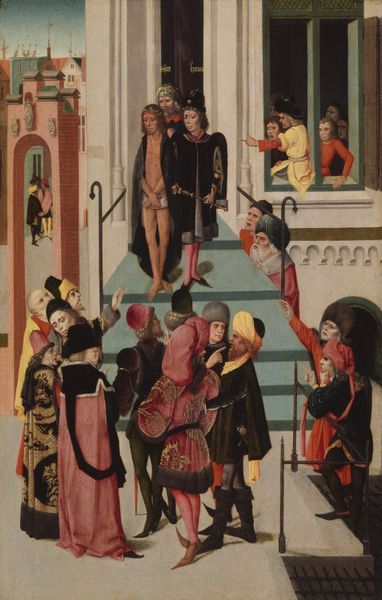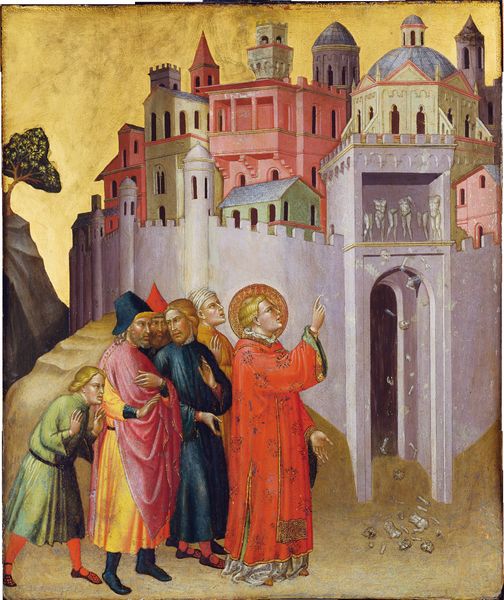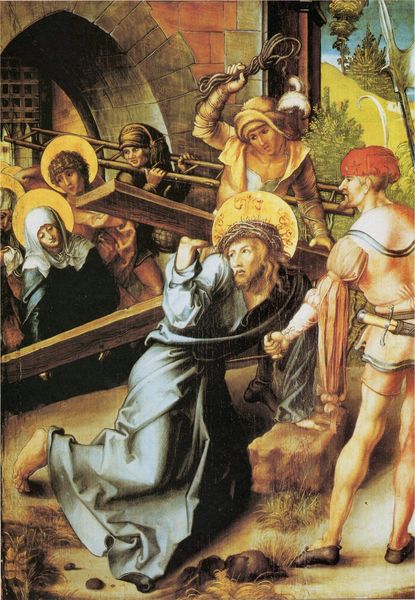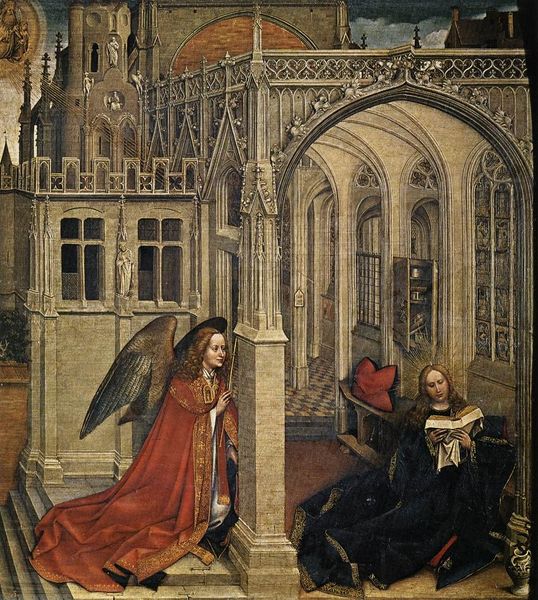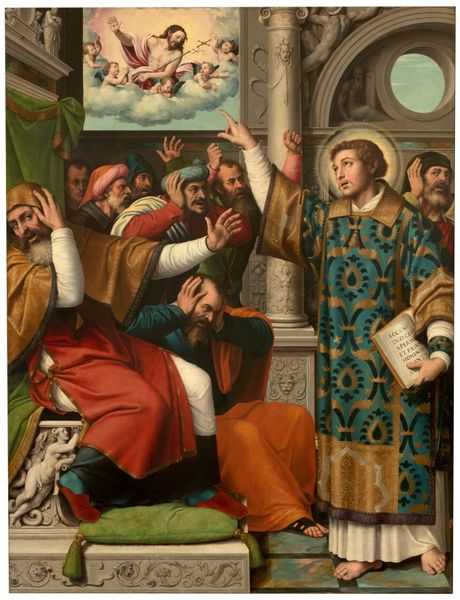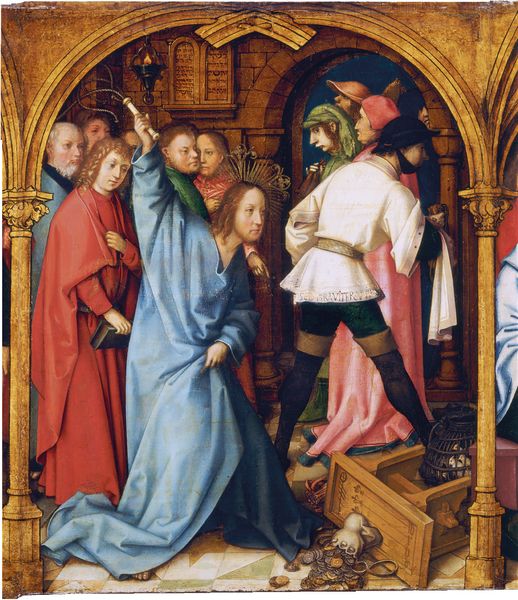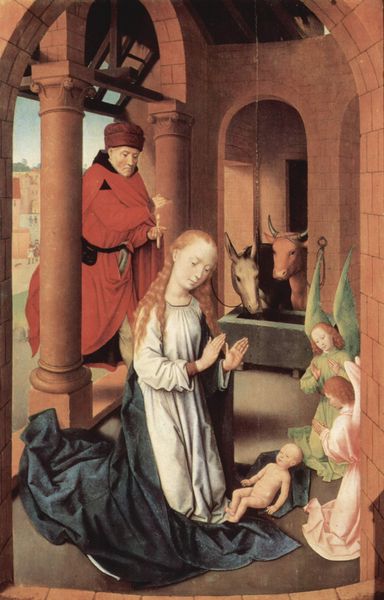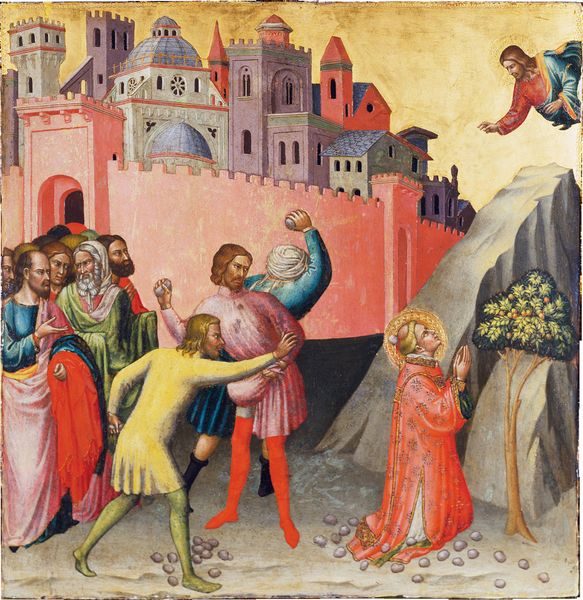
oil-paint, fresco
#
narrative-art
#
oil-paint
#
figuration
#
fresco
#
oil painting
#
naive art
#
history-painting
#
early-renaissance
#
mixed media
Dimensions: 85.8 x 73.7 x 0.9 cm
Copyright: Public Domain
Curator: What strikes me first is the, dare I say, playful cruelty. It's Anonymous's "The Martyrdom of St Thomas," from around 1480-1490, housed at the Städel Museum. Editor: Yes, playful is the word! Look at the finery those executioners are sporting. It’s such a stark contrast to the gravity of the situation. Oil paint, isn’t it? I’m curious about the underlayers, the gesso, the texture. Was it commissioned or painted for the artist's own accord? Curator: It's believed to be oil on panel, yes, characteristic of the Early Renaissance, lending to those vibrant colors and crisp details. The meticulous execution certainly suggests a commission, someone of wealth wanting a rather... stylized martyrdom depicted. It reminds me a bit of theatre; dramatic staging for maximum impact. What do you think about the symbolism here? Editor: The stage is set, indeed. The clothing is speaking volumes: labor versus opulence, linen and dyes against rich velvet and intricate brocade patterns... Who produced these materials? Under what conditions? And the well there. Was it actually there, a common public resource in plain sight? Curator: The well! I see that rose. Perhaps the painter is hinting at ideas around spiritual purity versus earthly sin, or a statement on public needs set against private brutality... or did he simply want to make it seem as if it happened by a local well, which again points back to theatre, making the events real. What's curious, though, is the grid below St Thomas. Editor: That grid, very odd... My mind wanders to artisanal ironworks, what it takes to produce such metal works and embed them into paving. Was this common for this region? I see material realities encoded into the piece at every level, drawing an allegory of religion versus labor! Curator: Exactly! The unknown artisan's labour becomes just as central to understanding as St Thomas’s faith! I also admire the attempt at perspective despite not really having achieved linear perspective fully... yet! It still feels so flat and symbolic, like an icon but humanised. Editor: Yes, quite an accomplishment. That blending is a great observation and certainly helps connect us in unique ways to a gruesome story and those historical realities that still touch our lives today. Curator: Indeed. It pulls back the curtain, making history so palpable. It's a captivating conversation piece, to say the least.
Comments
No comments
Be the first to comment and join the conversation on the ultimate creative platform.



